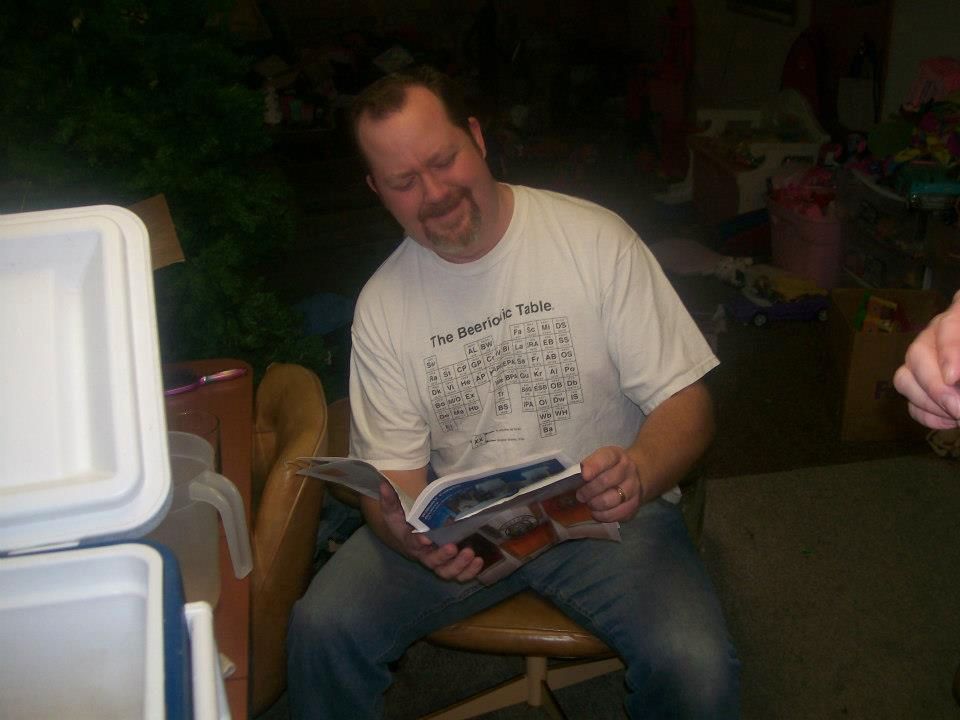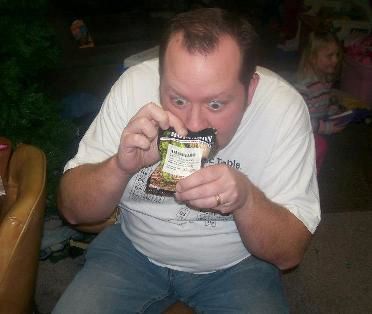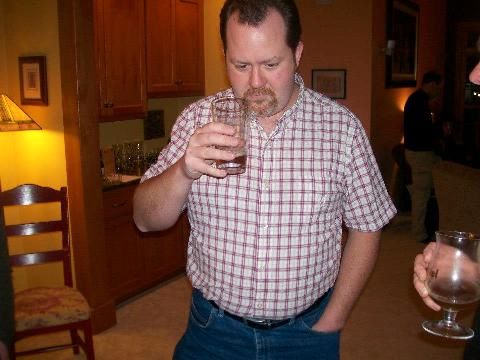David “The Engineer” Taylor
Hey, Dave Taylor here, a.k.a. David M. Taylor, or to those on the various online homebrewer forums, dmtaylor or dmtaylo2. And so what?! Well, here’s what. I’m a chemical engineer by degree, and I’m a Nuclear Coating Specialist and a NACE Certified Coating Inspector (Cert. No. 7998). I do a lot of different stuff at the local nuclear power plant, but the most important job I have is to make sure the paint won’t fall off the walls of nuclear reactor containment buildings during a postulated large break pipe rupture when we have to recirculate the spilled water from the basement of the containment back into the reactor because if all the dust bunnies inside the containment building combine with little flakes of paint it can clog the strainers down there and inhibit the water from getting pumped back into the reactor which could cause a meltdown.
So what does that matter? It doesn’t. Forget I ever mentioned it. It’s how I make my living, and that’s all. Now, here comes the good stuff.
Once upon a time, I think it was 1999, my girlfriend who knew I was into craft beer bought me a couple of homebrew recipe books for my birthday. For a guy who also loved science and loved to cook, this was one of the best gifts I have ever received in my life. I had never seriously thought about homebrewing before, and yet about a week later I had picked up Papazian’s book and my first kit and I was immediately hooked. I soon dumped the girl (*a tear drop from the corner of his eye*) but I kept up the passion for the homebrew. Looking back I’m sure those first dozen beers really truly sucked, but I loved them because they were my own creation. I started designing my own recipes from day one, with a little help from Papazian, and later, Ray Daniels’ Designing Great Beers. Great books. I used to read DGB every single day, for like 2 years. My copy is all worn and stained and falling apart, I’d read it so many times over and over.
About 3 or 4 years later, I felt I was making good enough beer to start entering competitions. The very first competition, I won a second place ribbon, so again of course I was hooked. I remember it was my favorite recipe at the time, Yellow Snow Blonde Ale, that took the ribbon. I had already brewed the same recipe like 3 times and had been tweaking it to get it right, and it apparently paid off. So I entered a few more competitions over those next few years, and occasionally won a ribbon. It was always exciting to get validation that I was making pretty okay beer.
It wasn’t long after that when I was invited by Marc Mecca of the Grape Grain & Bean to join a little club he was trying to get started, something by the name of the Manty Malters. Sure thing, I wanted to get in on that action. And it was just what I needed. I rarely missed a meeting then, as now, as I always just loved tasting new and experimental beers, talking and learning about homebrewing. So I suppose I was one of the original members of the current resurrected club. Apparently the same club had existed 10 years before but died out, so we stole the name and made it our own. In the early days I was quieter and less sure of myself. But in those first few meetings, a guy by the name of Jason Johnson asked if anyone else was interested in becoming a BJCP judge, as he had found out about a class and was going to sign up. Shitchyah!
So Jason and I went through the BJCP course offered by a corroboration between Titletown Brewing and the Green Bay Rackers. We were taking classes on a weeknight for 12 weeks at the House of Homebrew with a handful of others, including Dave Oldenburg, who was then a gump like us, later to become none other the head brewer of Titletown Brewing Company. I learned a LOT through that BJCP course. We tasted just about every single style of beer that exists, and practiced judging them. To anyone who has even the slightest inkling of wanting to learn more about beer and/or judging, I strongly encourage it when you get the opportunity.
It was around this time also that I made the gradual moves from extract with steeping grains to partial mash, and then to all-grain. I remember my first taste of that first all-grain beer. It was another blonde ale, this time a Shipyard Export Ale clone. It totally blew me away with how fresh and grainy it tasted. And it was so easy to brew! Just a simple blonde ale. I knew from that day forward that I was never ever going back to extract brewing.
In those early all-grain days, I ran a ton of experimental batches. I wanted to know exactly what the different mash temperatures would do for me, mash times, yeast strains, hop varieties, you name it. I’ve got a lot of tables and graphs that I still use and update to this day. It’s an engineering thing. The most important thing I learned from all that: Question ALL rules of thumb, don’t be afraid to play around and try new things, and develop your own rules based on your own experiences.
I still read a lot, constantly trying to learn more as well as to help other novice and intermediate brewers, and I contribute to a lot of homebrewing forums on an almost daily basis. My main one is Northern Brewer. I also spend a good deal of time on the AHA homebrewing forums and several others. It’s gotten to the point where I feel I know every opinion on every topic, and have of course formed my own conclusions on each of them based on my own experiences.
Other things virtually unique to me; I brew almost exclusively in small 1.5-3 gallon batches. Why? Lots of reasons. I don’t drink a lot and my beer tends to go stale before I can drink it all, and this problem would be far worse if I was making standard 5-gallon batches each time! With the smaller batch size, I get to keep a heck of a lot more variety in my cellar. At any given time, I have around 10 different batches of homebrew in the cellar. So for me, the smaller batches make sense. Also it’s quicker, easier, and cheaper to brew small batches. I can mash in a bag and sparge very easily. I can do everything on my stovetop. I don’t have to wait as long for the beer to get up to a boil. My equipment doesn’t need to be so big. I can chill in a tub sink using a little cold water bath. I don’t need to make huge starters for every batch. Lots of reasons smaller is better. But anyway.
I like cider almost as much as beer. I’ve tried probably almost 100 different commercial brands of cider, and I have planted my own cider apple ochard in the backyard. I also love mead. I have made my own cider, mead, and wine on occasion and it usually turns out pretty darn good. It’s all a lot easier to make than beer – just take your raw juice or honey-water and add yeast! I’m really not a wine guy though. It’s okay to taste but it’s too dang expensive.
I am a self-proclaimed ghetto brewer. Why? Well, I’ve been brewing for 13+ years, and yet, it took me 13 years to buy glass carboys. I also used my blender to mill grains for 4 years before receiving a proper mill as a GIFT. I boil on the stovetop and to this day I do not own a propane setup at all. Nor a chiller, I use a cold water bath for that. Yes, I am an engineer.
A few of my most famous beers include the Jalapeno Porter, 1883 Chocolate Rye Ale, Fiery Future Vienna, Smoked Harvest Apple Ale, Sour Smoked Sumerian, and Yellow Snow Blonde Ale. I love all kinds of beer but I have a special place in my heart for all German lagers (the real stuff from Germany only!) and Belgians. My favorite beer is Gulden Draak, which is a delicious Belgian strong dark ale.
That’s about all I could think of to write about in a couple of hours. Happy brewing!







